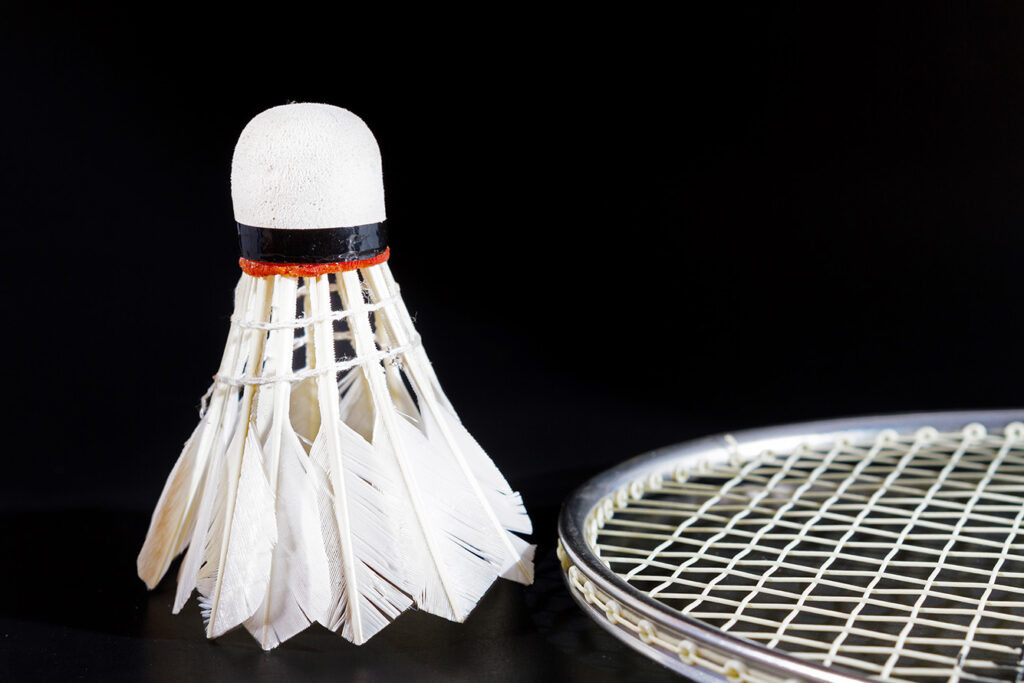Commentary: Training for Olympic sports where U.S. is invisible
Monday, May 12, 2025
By Kevin Rouch
CBUSsports Publisher
krouch@cbussports.com

Badminton, along with table tennis and team handball, are sports where the U.S. has little impact on the world stage.
Like most sports fans, I look forward to watching the Summer Olympics on the myriad of channels and platforms offered to the viewing public. My first memory of the Olympics is from the Mexico City games in 1968.
I do remember the black-gloved, clenched-fist protest of Tommie Smith and John Carlos on the podium after the 200-meter race. However, the moment that had significant sports impact for me was Bob Beaman’s reaction after he set a new world record, long-jumping 29’2 1/4″.
#OnThisDay Bob Beamon set the only Olympic Record in athletics that still stands 49 years later #Mexico1968 pic.twitter.com/M3iLtUYDPy
— The Olympic Games (@Olympics) October 18, 2017
Beamon’s jump was almost two feet past the exisiting world record and still stands as the Olympic record. Mike Powell broke the world record with a 29’4 1/4″ jump at the World Championships in 1991 in Tokyo. Powell’s and Beamon’s leaps remain the top two wind-legal jumps in track and field history. The Mexico City “flight” was wowing to me as an eight-year-old and remains so today.
Now, from the sublime to the ridiculous. Whenever I pass by the increasing number of empty commercial spaces that could accommodate training facilities (some have already been so transformed), I think about the sports for which our country has very little presence in world competitions. They’re the Olympic sports seen on the outer rings of cable space during the competition every quadrennial.
The three I’ve given the most thought to are: badminton, table tennis, and team handball. Badminton, the ultimate backyard sport for Americans, has never had an American medal winner since it became an Olympic sport in the 1992 Barcelona games. The top American participant, Tony Gunawan, actually won a gold medal in men’s doubles for Indonesia before emigrating to the U.S., but did not win a medal after that.
Table tennis, the ultimate American rec room sport (with its table-playing relative, pool), has never seen an Olympic medalist. Both badminton and table tennis have competitions for women, men,women’s doubles, men’s doubles, and mixed doubles. Table tennis has been Olympic sport since the Seoul games in 1988.
The final sport for my abandoned training facility is team handball. The men played team handball in the infamous 1936 games in Berlin, then took a 36-year hiatus, beginning again in the 1972 Munich games. Women’s teams began Olympic competition in the 1976 Montreal games. Never has an American squad captured an Olympic medal in this rough and tumble sport.
If you don’t know anything about team handball, you will suffer no shame for it. The team consists of seven players, one of whom is the goalkeeper. According the Olympic rules, the six outfielders can catch, throw, bounce, or strike the ball in any manner and in any direction, using their hands, fists, arms, head, body, thighs or knees. They cannot intentionally touch the ball below the knee.
In team handball, a player can’t go more than three steps without dribbling the ball and can’t hold the ball without making a move for more than three seconds. There is a lot of contact, with a premium on speed, size, and throwing ability. Sounds like a few talents Americans have exhibited in sports we see every day on cable.
Impressive way of scoring at handball
— Massimo (@Rainmaker1973) April 18, 2025
[📹 ehfeuro]pic.twitter.com/NVrBg854qQ
My less than deep research has shown that there are a number of leagues, college programs, and Olympic development teams working in all three sports. Why not have Central Ohio become an East-of-the-Mississippi-River mecca to develop the talents to nab one Olympic medal in any of them. Anyone got a cobwebbed building not doing anything (prefer high ceilings)?
Previous Commentary: Luke Lachey is a steal for Texans (April 28, 2025)